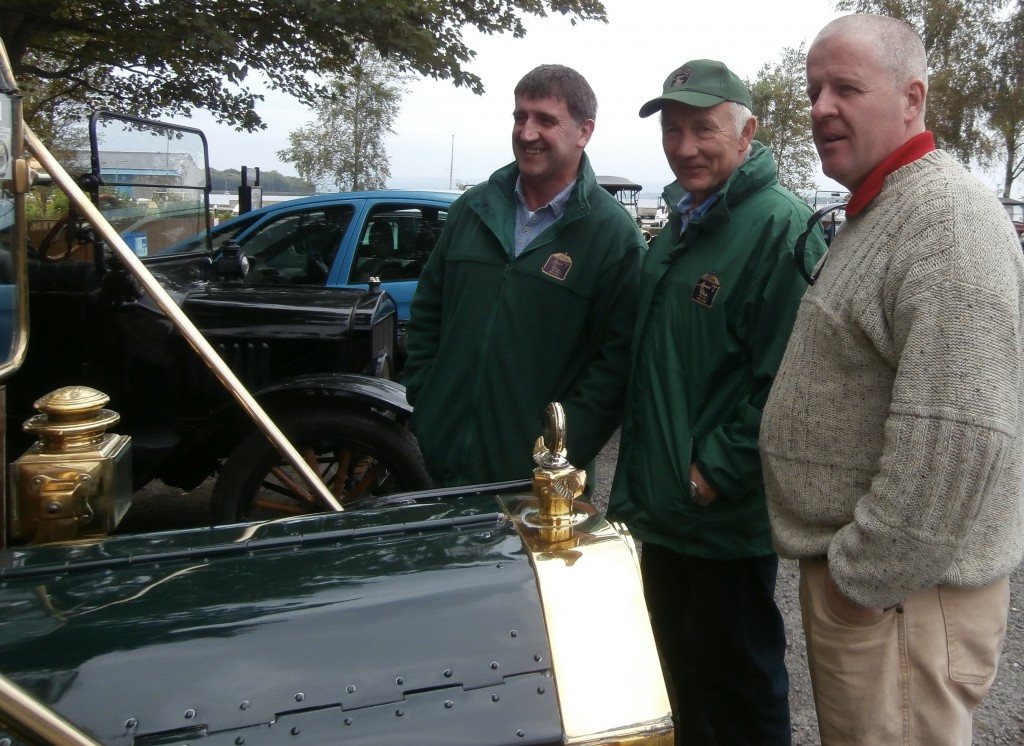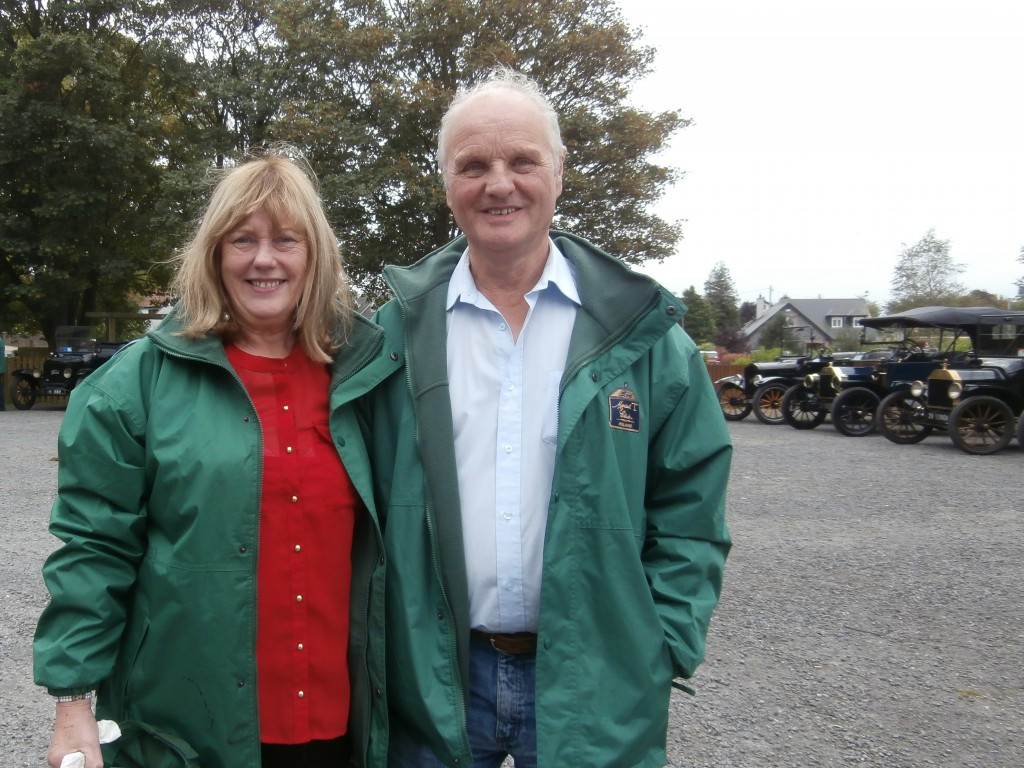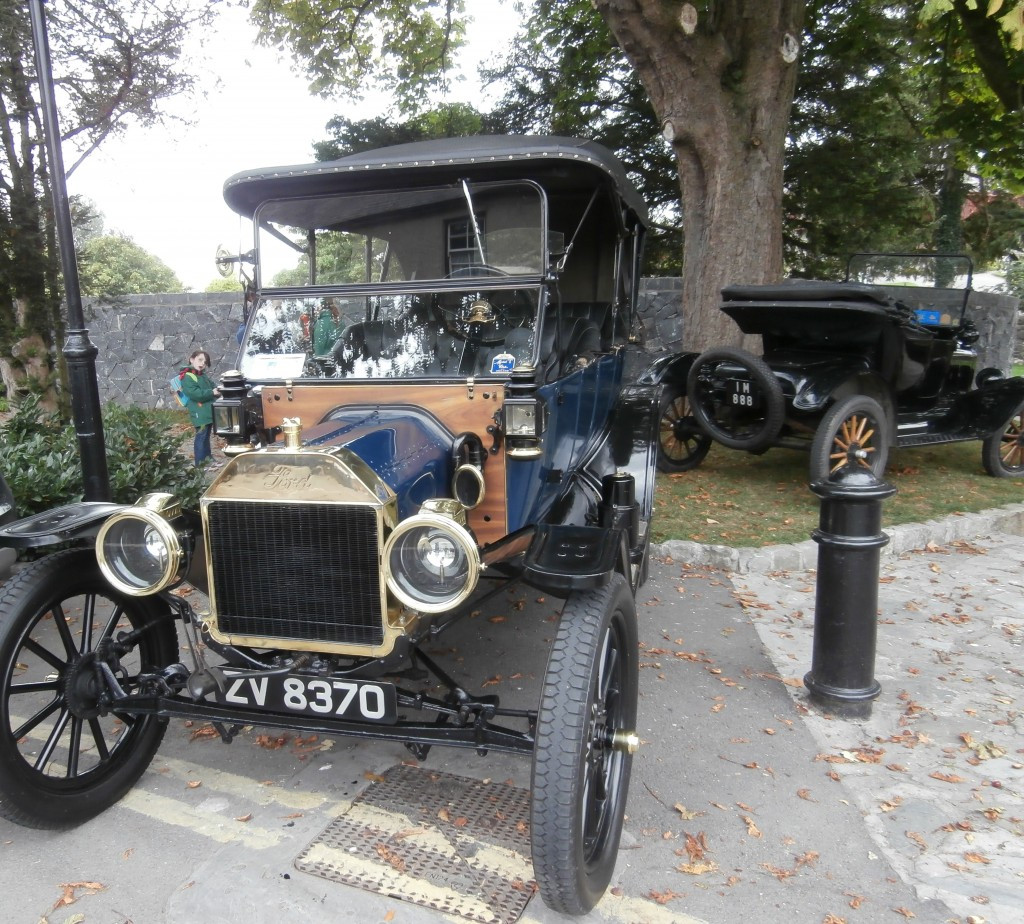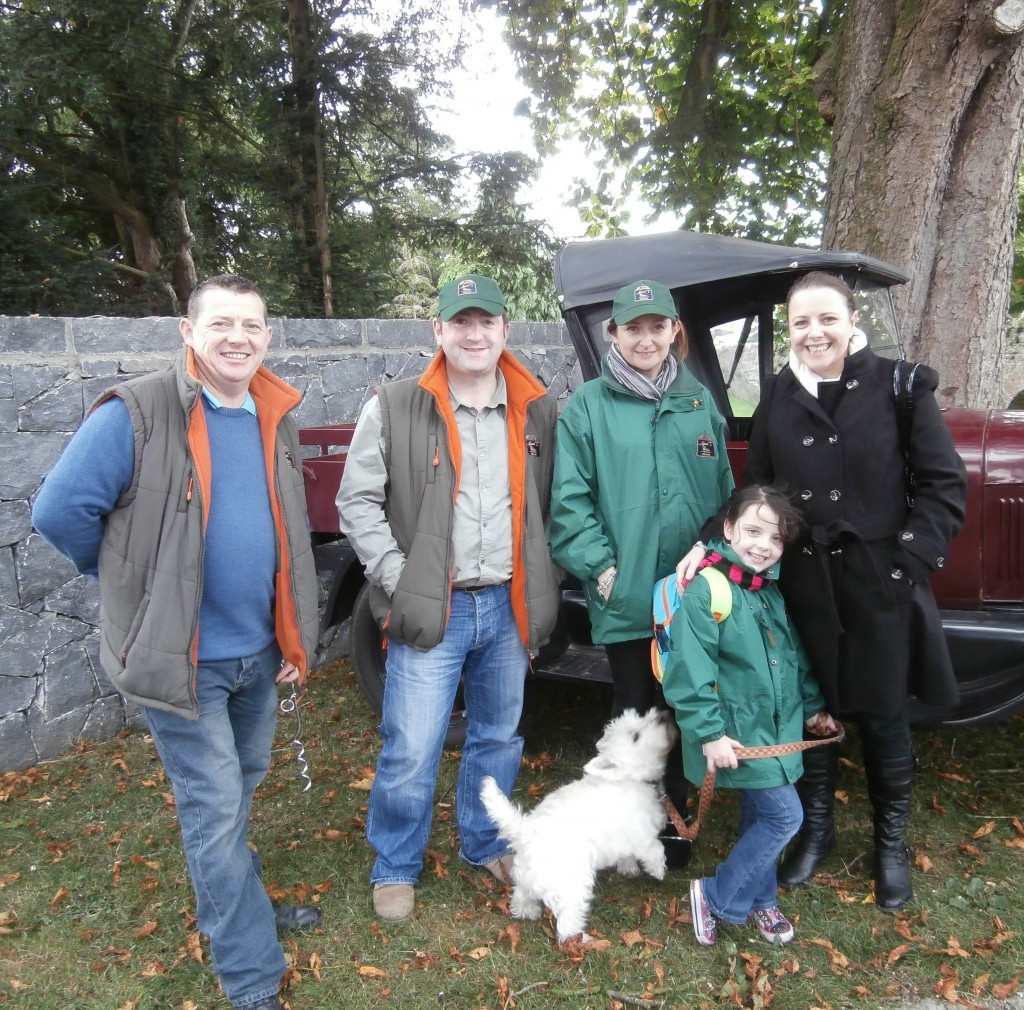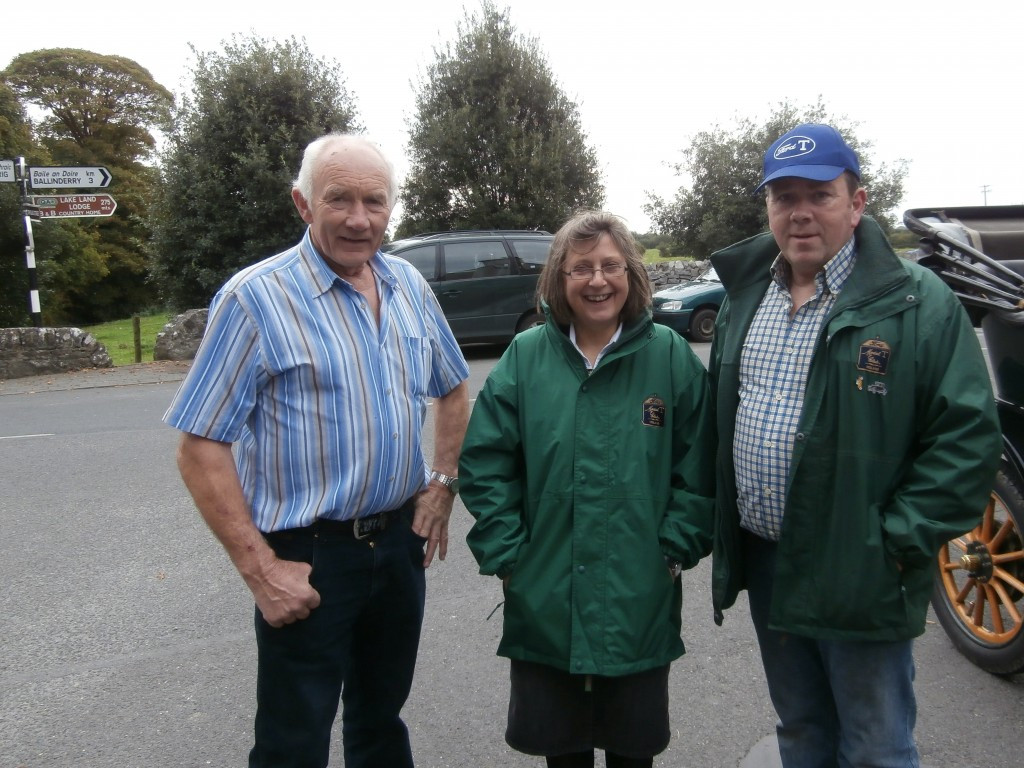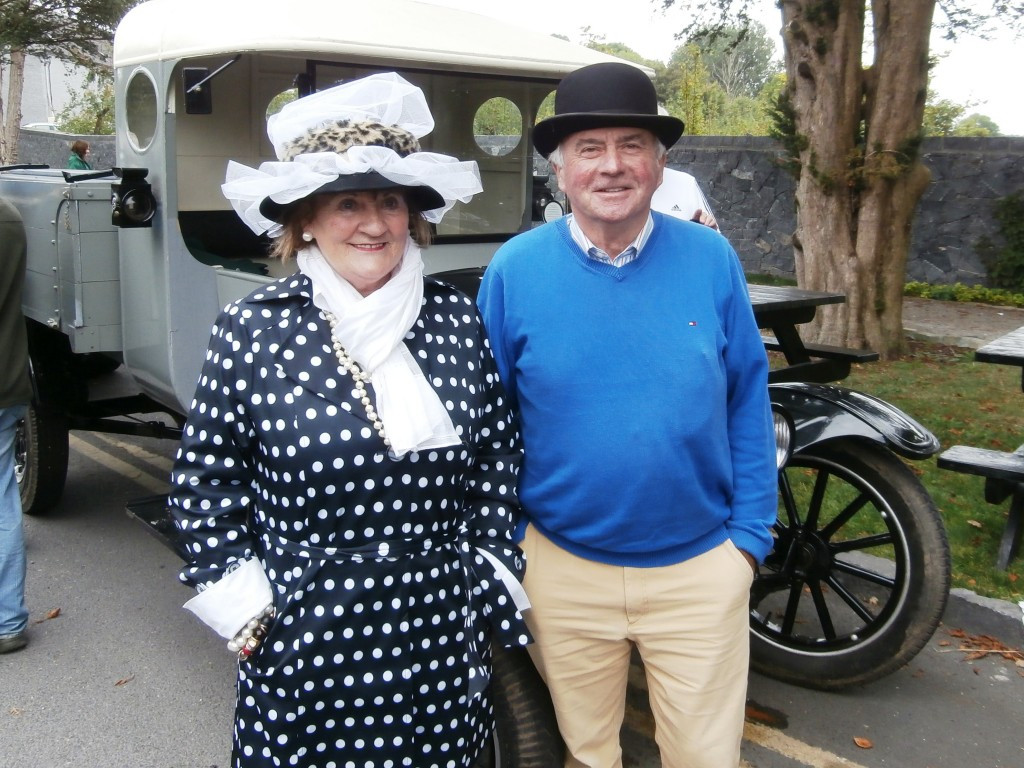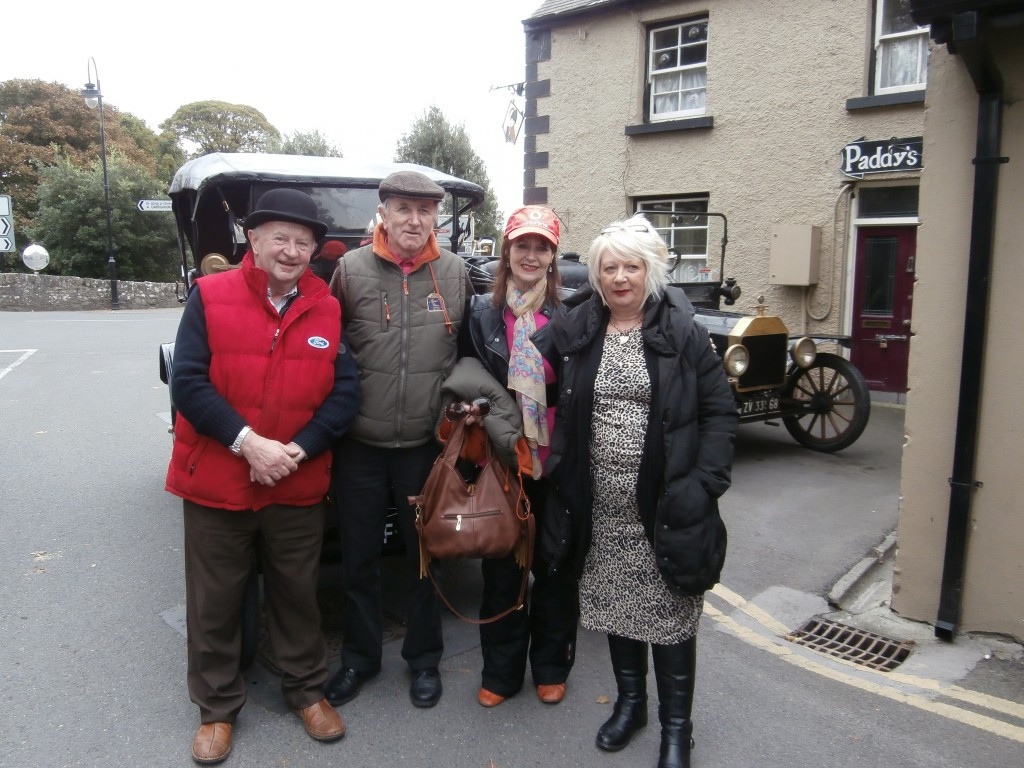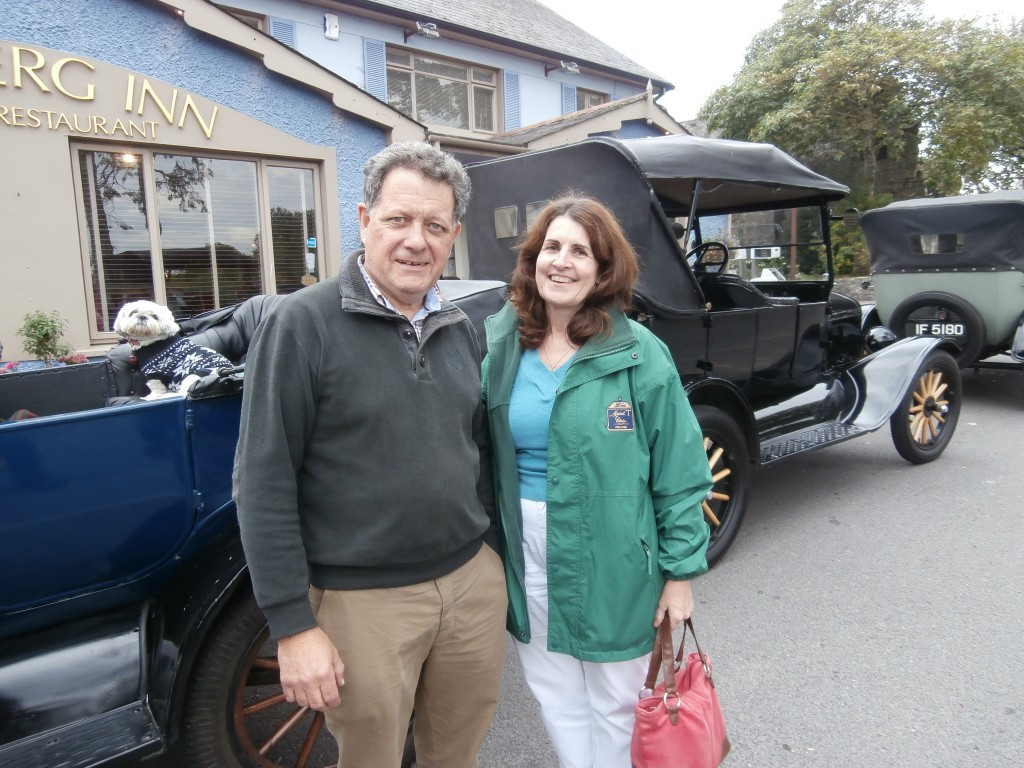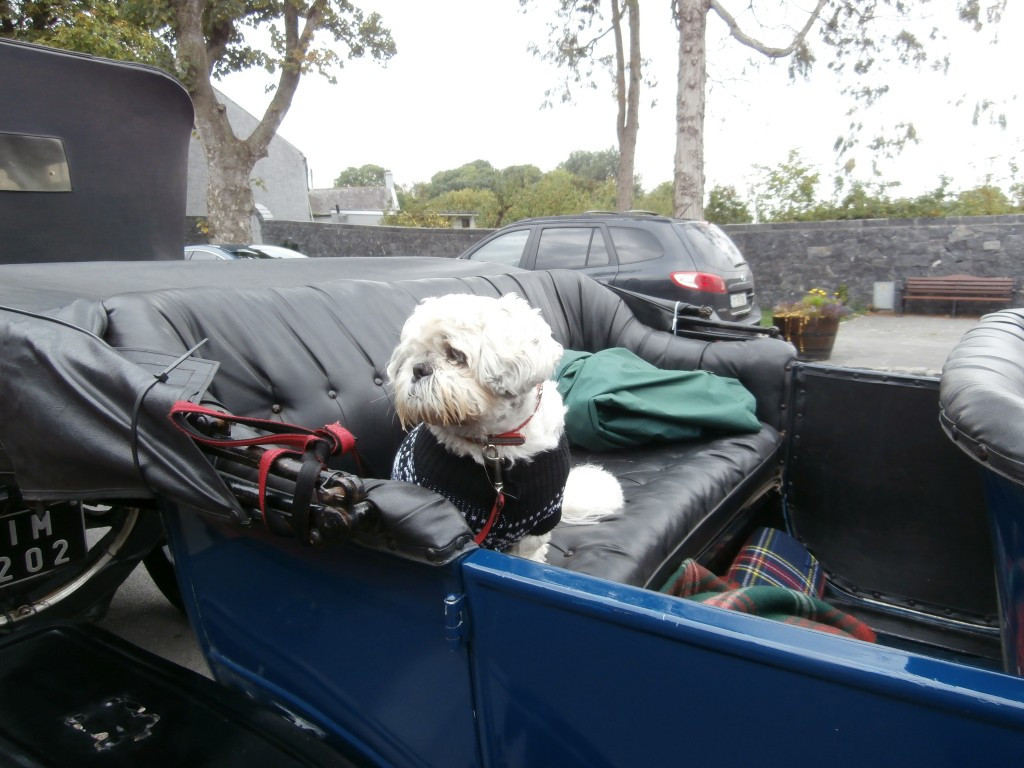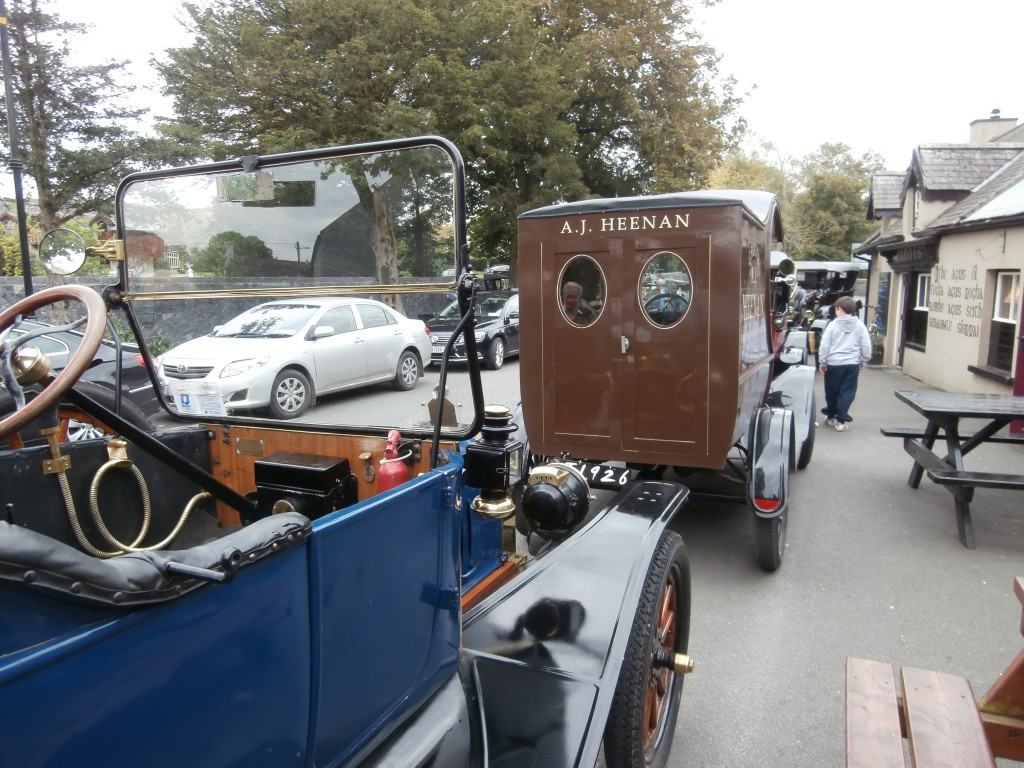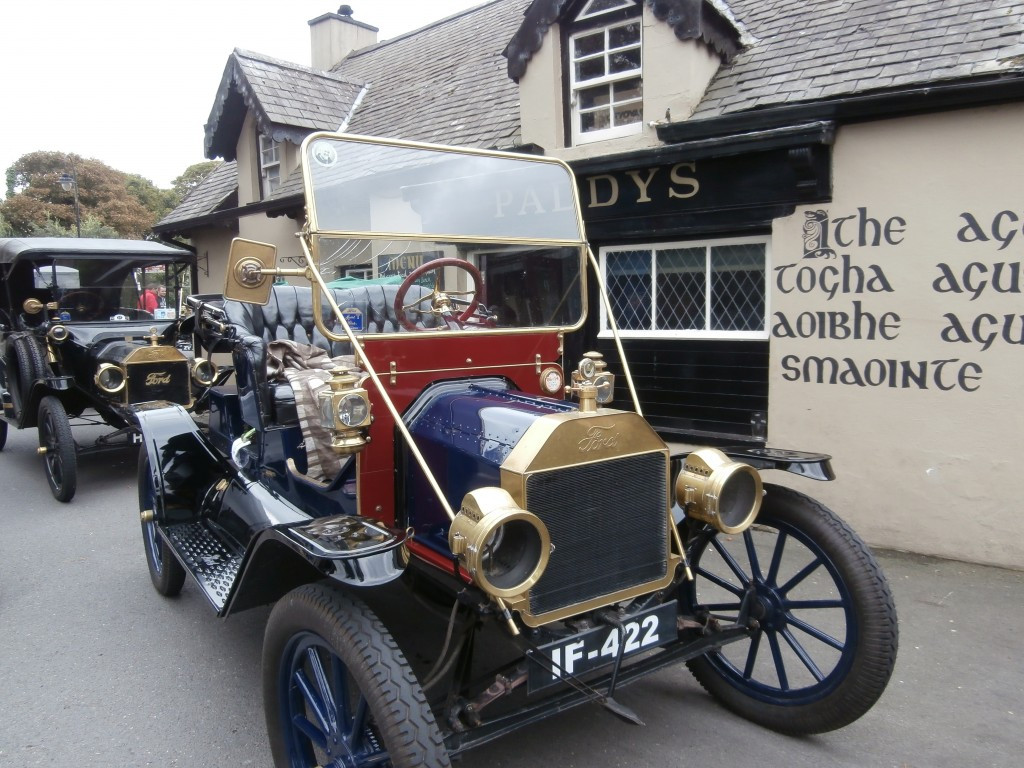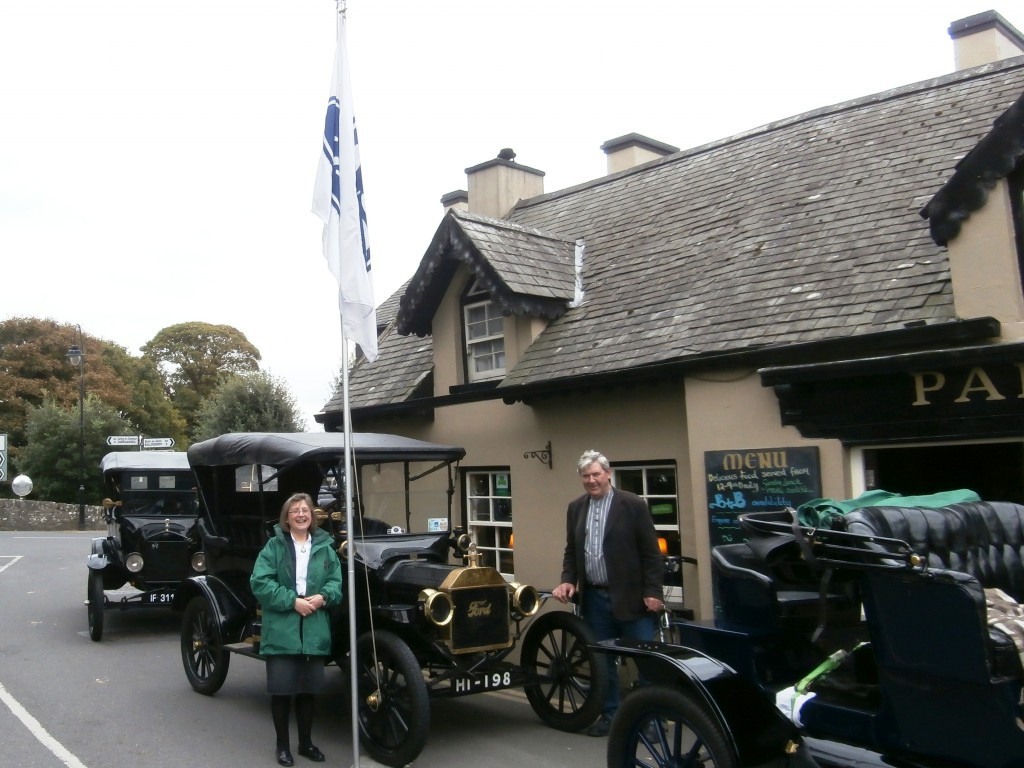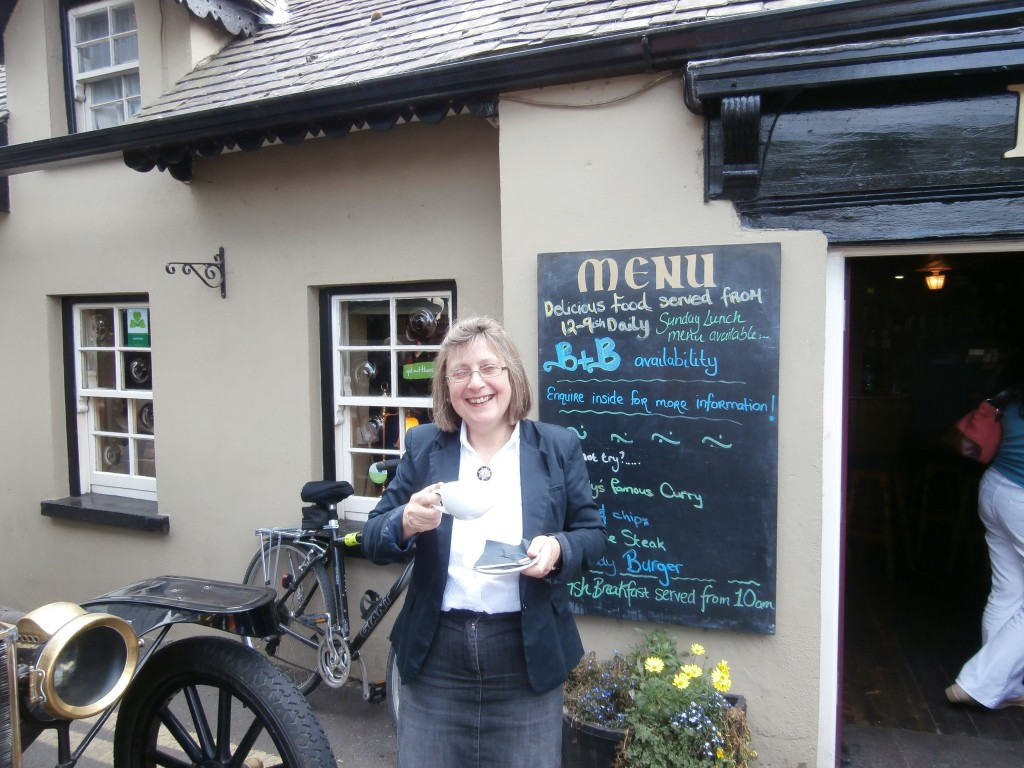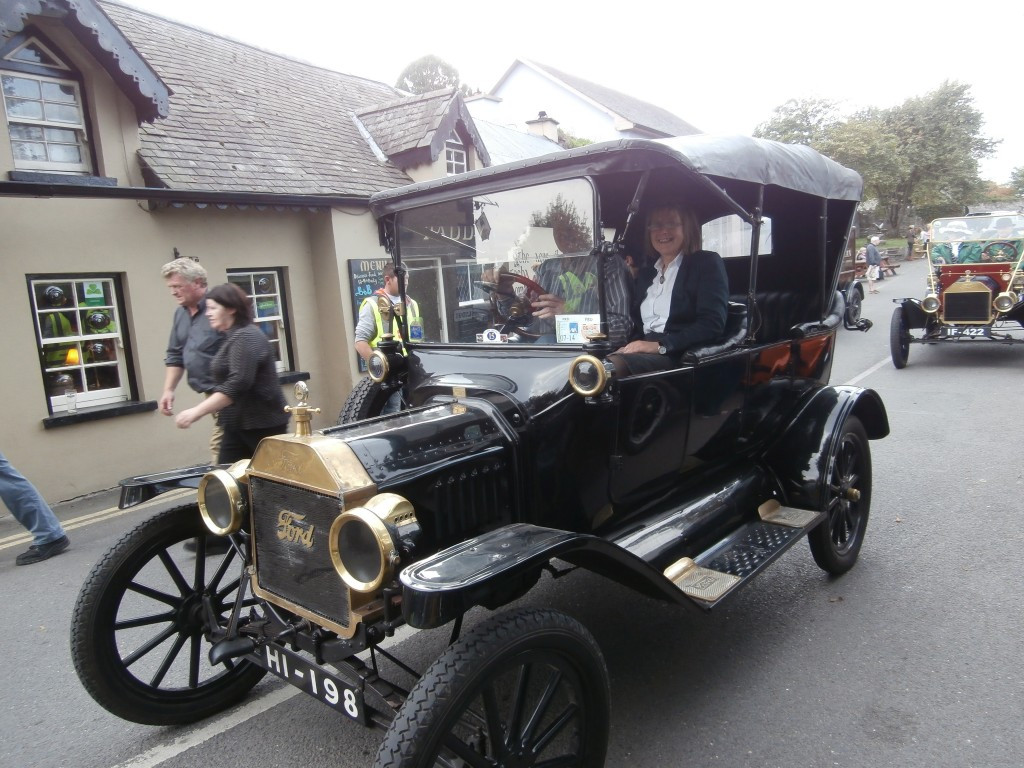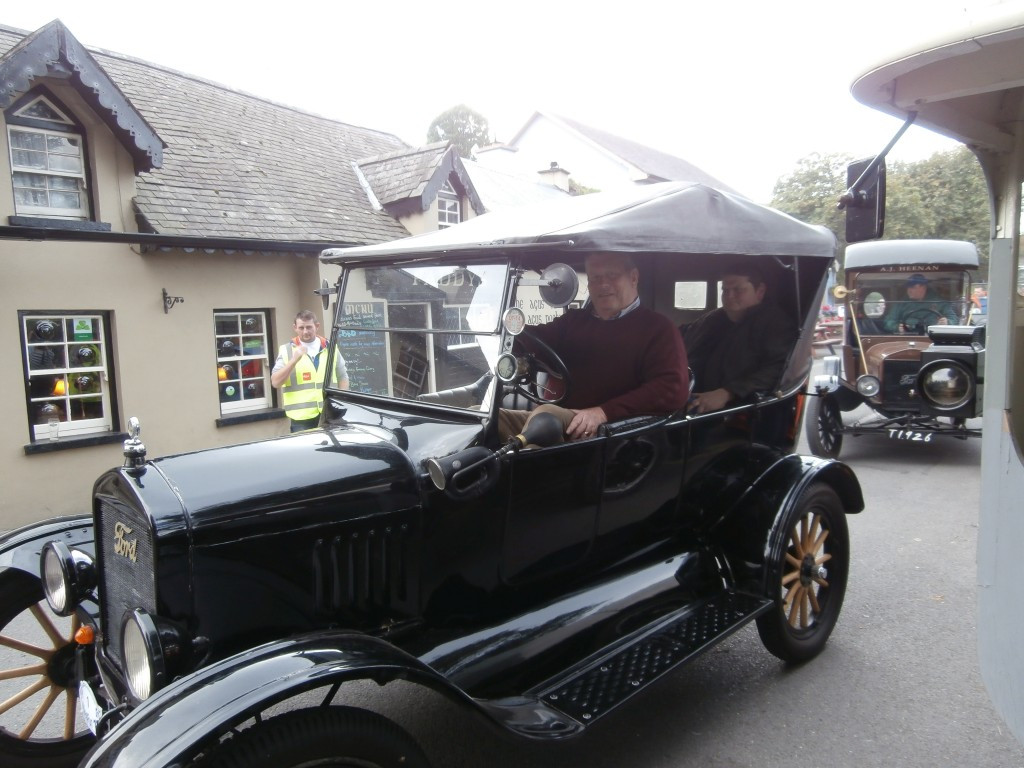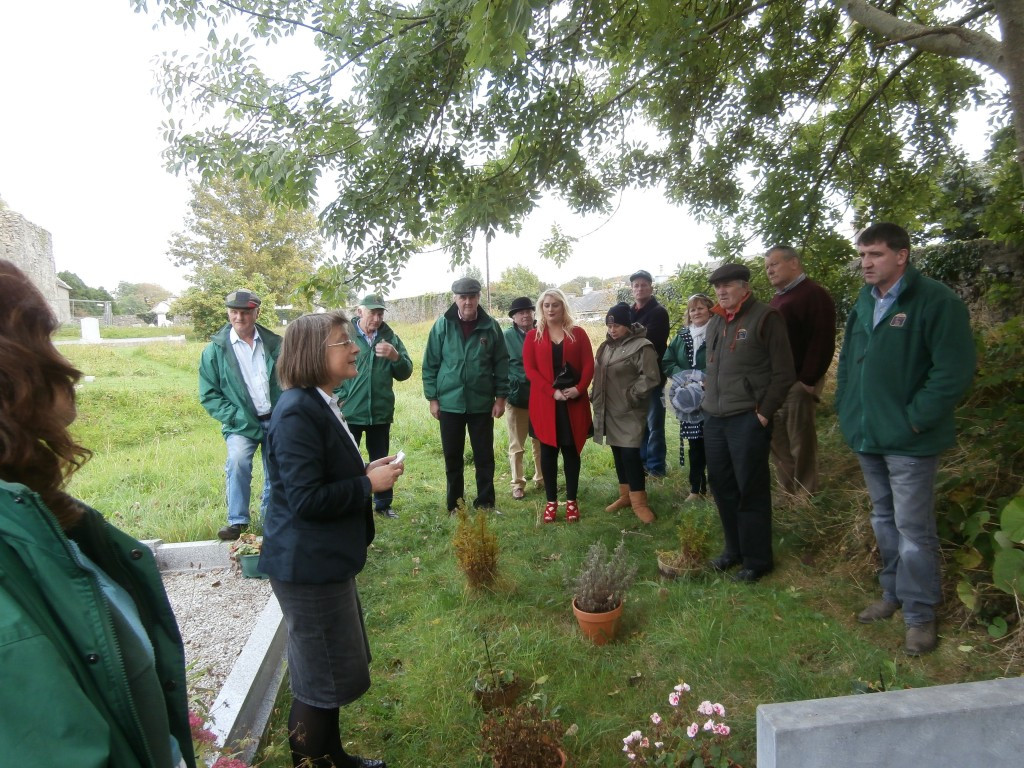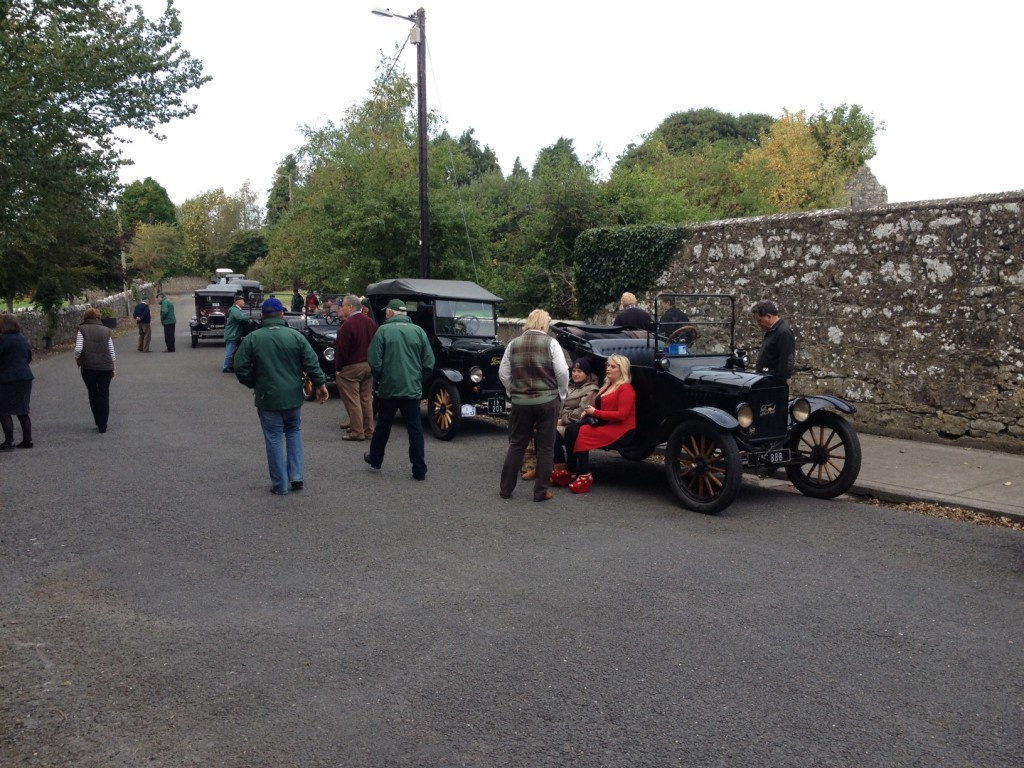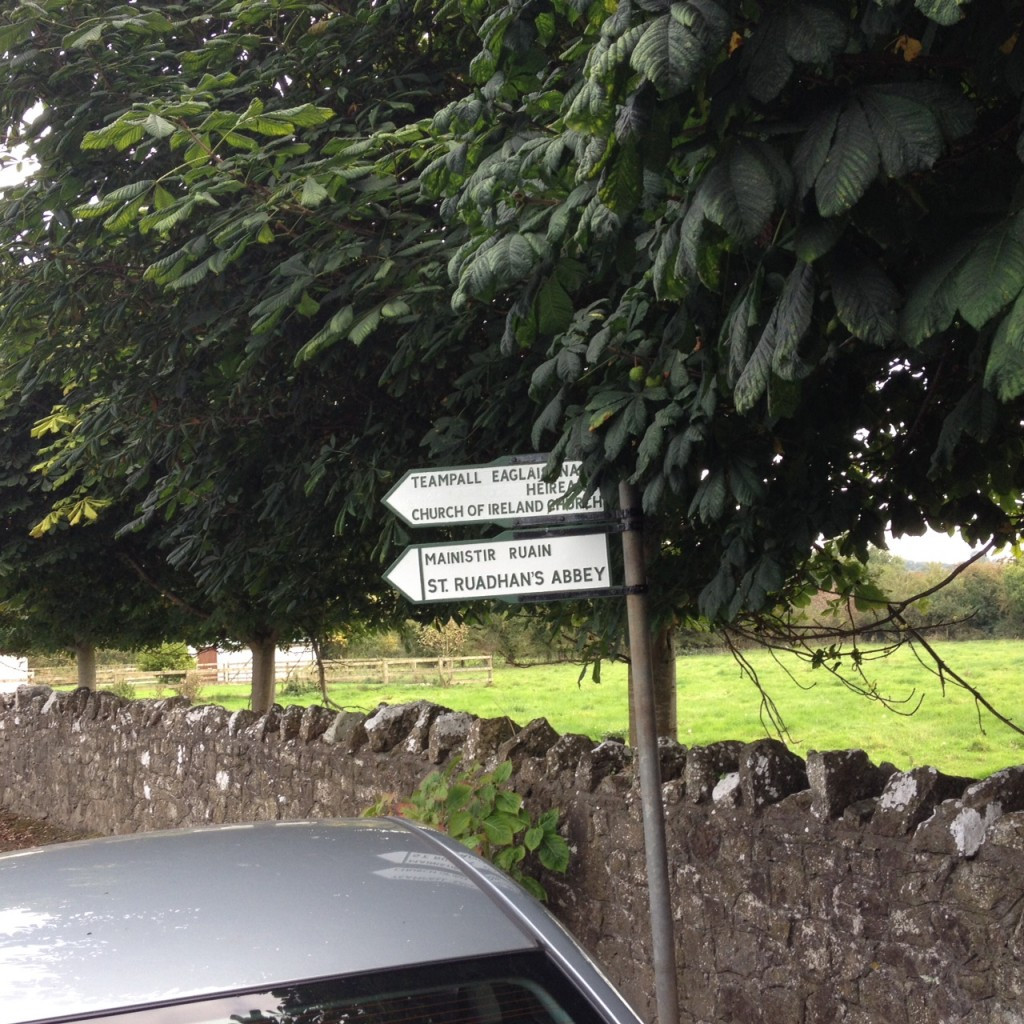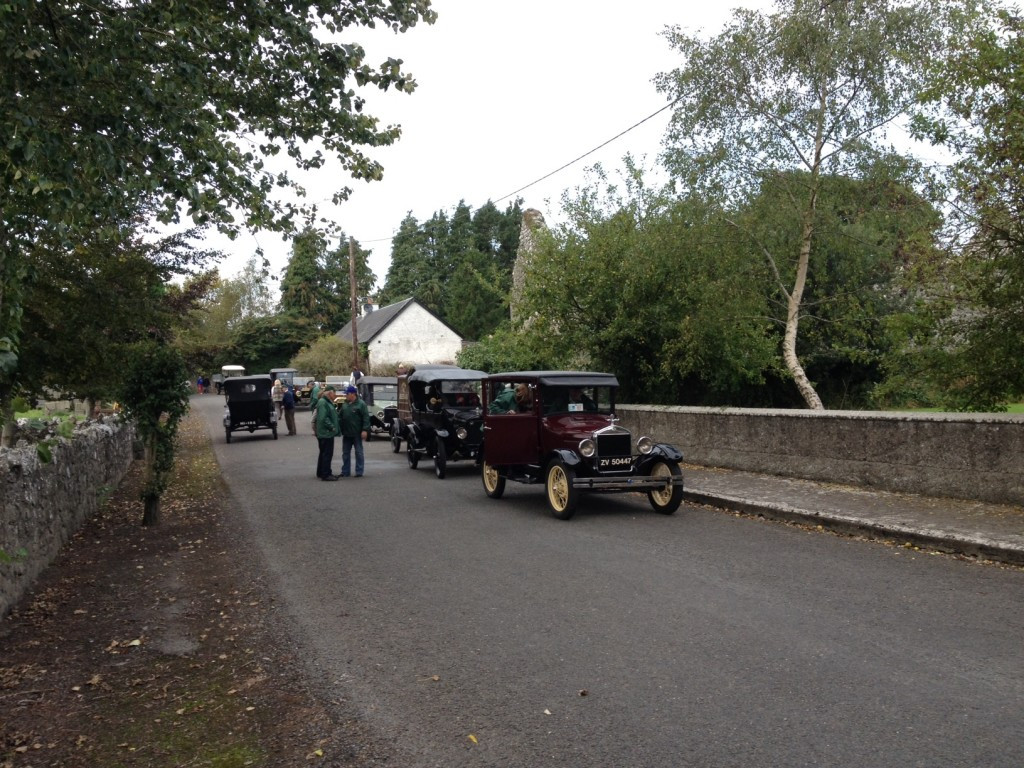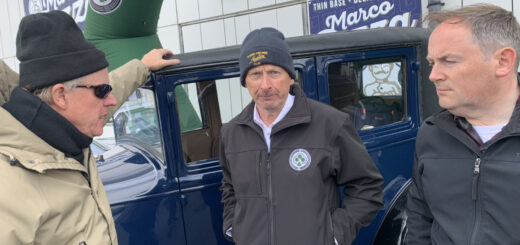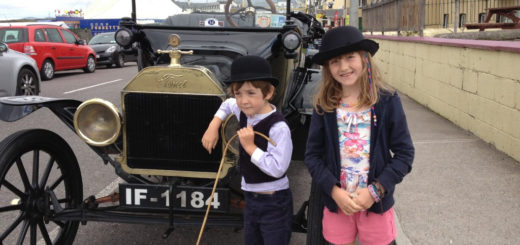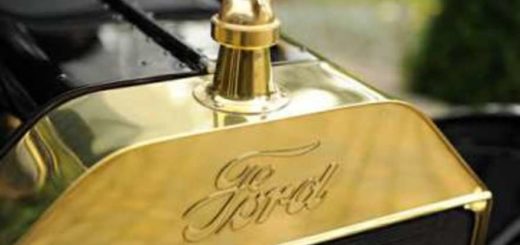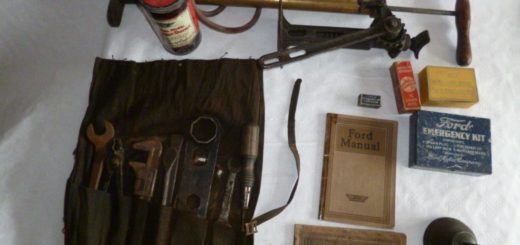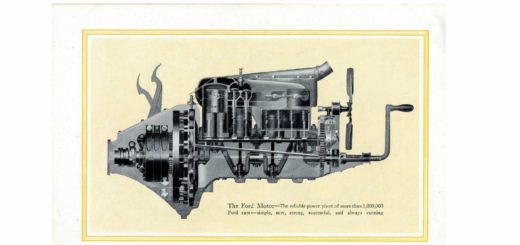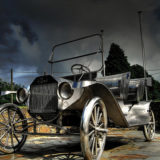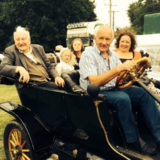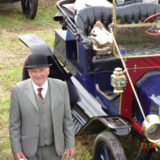North Tipperary Run 2013
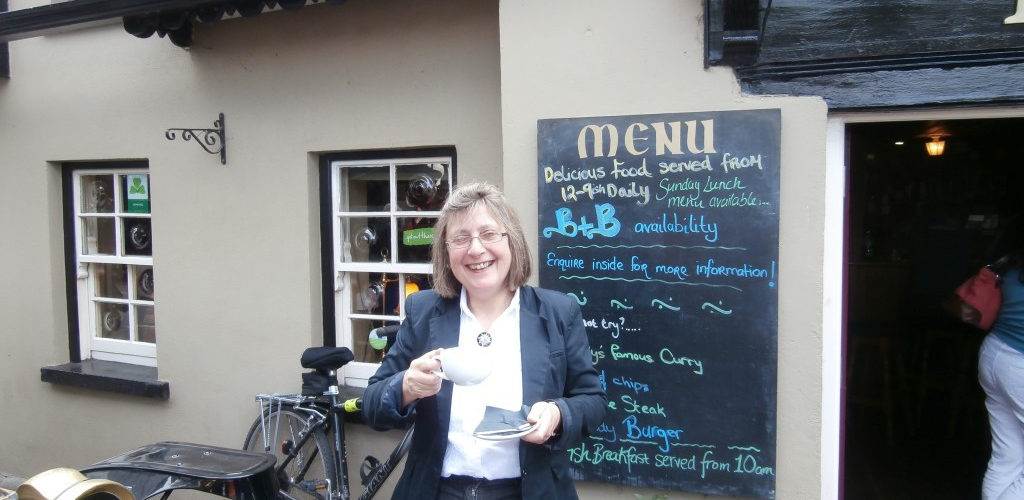
Patrick Daly and Yvonne welcomed T members plus friends to their first autumn rally where the 10.30am assembly point was the Railway station at Nenagh, Co. Tipperary.
In or around 11.00am the convoy of 16 Ts dating from 1909 to 1927 comprising of a mixture of cars and commercials and assortment of colours got underway. Autumnal weather conditions were excellent with 16c temperature, clear skies and stillness.
Dromineer
Having assembled at Nenagh Railway Station under the Ford flag, we drove the first short leg of the journey to Dromineer on the shores of Lough Derg. Here we enjoyed lake views, saw the ruins of ivy-clad Dromineer Castle and had refreshments in the Lake Café, on the ground floor of Lough Derg House.
An attractively restored stone building, Lough Derg House was once a barge store, and now specialises in offering budget accommodation to walkers and sailors. Here we enjoyed the home-baking of Fiona Collison, chef-proprietress, and `Pónaire’ coffee, served by Fiona’s husband, Declan. `Pónaire’ (Irish for `bean’) is a local artisan coffee-roasting company, based in Annacotty.
Terryglass
From Dromineer we headed northwards in convoy to picturesque Terryglass, winner of several `Tidy Towns’ competitions. A colourful blackboard notice welcomed us to Paddy’s Bar (prop. Brendan and Máiréad Tierney), where we parked up and the Secretary erected the Ford flag.
Several local people had come to see the Mocel Ts. Having chatted to them and discussed mechanics, we rested and lunched at Paddy’s Bar, where Máiréad and her team served us a delicious Sunday roast.
Some members then took a walk about the village to view the site of Terryglass Abbey, a monastery founded in the sixth-century by St Columba of Terryglass, one of twelve students of St Finnian of Clonard, who were to become known as the `Twelve Apostles of Ireland’!
Two ancient wells in the village also caught our interest, one offering a cure for eye ailments and another a cure for headache. Leaving Paddy’s Bar, we drove to the lake shore for a quick last view of Lough Derg, before heading out to nearby Lorrha.
Lorrha
Lorrha, one of the most northerly villages of Tipperary, is famous for its ecclesiastical remains. Driving into the village, we encountered the remains of a Dominican Friary founded in the 13th century by Walter de Burgh, Earl of Ulster.
Our focus was, however, the present Church of Ireland to the east of the village, a most unusual building in that it is built as an extension of the chancel of St Ruadhán’s Church, which itself was built about 1000 AD on the site of St Ruadhán’s Abbey founded in the 6th century.
Not only are Terryglass and Lorrha famous in their own right as monastic sites, but they also have famous manuscripts associated with them. The twelfth-century Book of Leinster (now in Trinity College Dublin) was written at the monastery of Terryglass, while the world famous Stowe Missal, probably written at the monastery of Tallaght, Co. Dublin, spent most of its life at the monastery of Lorrha, where it was stored in a `bookshrine’, a shallow rectangular oak box covered with metal sheets.
Dating from between 792 and 803 AD, the Stowe Missal is mostly in Latin, but its final leaves contain a tract in Irish on the Mass, and some spells in Irish, one against loss of eyesight and another against injury by thorns.
The Abbey of Lorrha was suppressed in the sixteenth century. The missal and its shrine were then hidden in the walls of nearby Lackeen Castle. In 1735 the owner of Lackeen castle, John O Kennedy, undertook refurbishment works, and the manuscript and casket were discovered within the castle walls. By the 19th century, the manuscript had become part of the library of the Marquess of Buckingham at Stowe House, Buckinghamshire, England, hence the name `Stowe Missal’.
The Stowe library was sold by auction in 1883, whereupon the missal and casket passed into the ownership of the Royal Irish Academy, Dawson Street, Dublin, where the missal is regularly on public display. The Stowe Bookshrine is kept in the National Museum of Ireland. (The Stowe Missal and Bookshrine, and also the Book of Leinster, can be viewed at www.isos.dias.ie)
Cloughjordan
Leaving Lorrha, we headed for Cloughjordan. Set right in the heart of this heritage town is Ireland’s only Ecovillage, a member of the European Ecovillage Network. Ecovillages describe themselves as `urban or rural communities of people who strive to integrate a supportive social environment with a low impact way of life’.
To achieve this, they practise ecological design and building, green production and alternative energy, growing food as much as possible within the community bio-region and protecting biodiversity.
Brenda, one of the Village residents, graciously gave us, at very short notice, an impromptu tour of the Village. She outlined the history of the project on its c.70-acre site, the construction methods used in building the Eco houses, and their wood-burning system of heating.
Many of the houses are cob-built, an ancient building material that consists of clay, sand, straw and water. The walls of a cob house are about 2 foot thick and its windows deep-set. The thick walls provide thermal mass, making the house easily heated in winter and cool in summer.
The site comprises three main units: the dwelling area, the woodland section (about 20 acres), and the farm (about 20 acres). One becomes a member by buying a site. Membership is diverse, as Brenda explained, and includes teachers, builders, architects, farmers, therapists, homemakers, students and retirees. The scope of the project means that it attracts attracts people for a wide variety of reasons, but the common theme among membership is the desire to work towards a more sustainable and community-based lifestyle.
Brenda’s description of low energy bills, clean soil, water and air, warm houses and home-grown organic vegetables charmed us all! Currently, the Cloughjordan Eco Village is home to about 70 adults and 30 children. As dusk was starting to fall, we thanked Brenda for her hospitality, and left Cloughjordan for Nenagh, where we loaded trailers, bid farewell and headed for home.
It certainly was a rally with a difference. The depth of knowledge of ancient Ireland and its history flows from Yvonne who in the space of a few minutes of addressing our members gave us a flavour of the hidden treasures that abound almost everywhere in our lands, hitherto to us anyhow, unknown and unseen.
Our grateful thanks once again to Patrick and Yvonne for their generous hospitality and welcome. We will be back!

